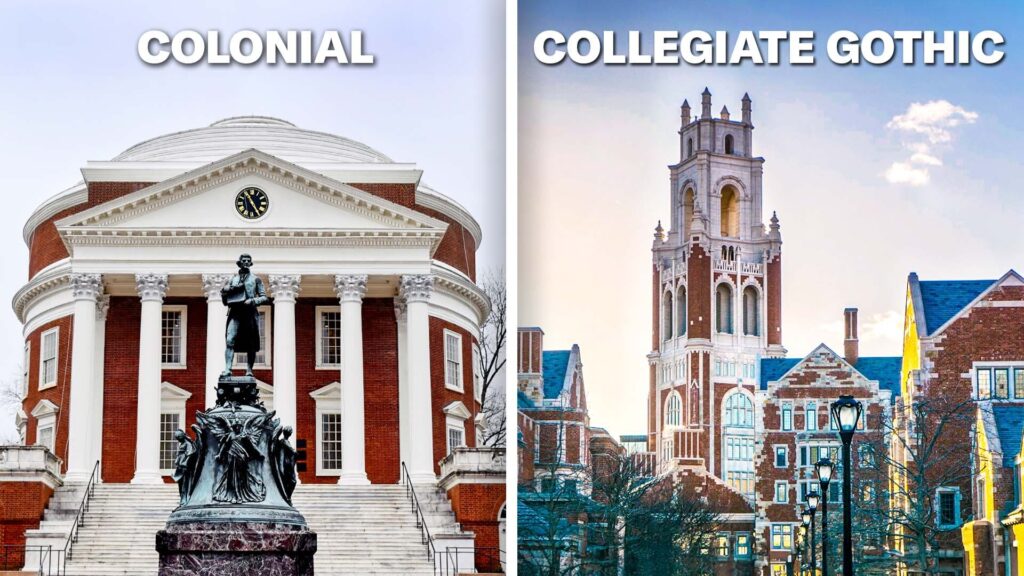Every now and again on social media, the observation circulates that Americans look back so fondly on their college years because never again do they get to live in a well-designed walkable community. The organization of college campuses does much to shape that experience, but so do the buildings themselves. “People often say that college is the best four years of your life,” says architect Michael Wyetzner in the new Architectural Digest video above, “but it was also likely that it was some of the best architecture you’ve been around as well.” He goes on to identify, explain, and contextualize the five building styles most commonly seen on American college campuses: colonial, Collegiate Gothic, modernism, brutalism, and postmodernism.
For examples of colonial campus architecture, look no further than the Ivy League, only one of whose schools was built after the Declaration of Independence — whose author, Thomas Jefferson, later designed the University of Virginia, drawing much inspiration (if not always first-hand) from ancient Greece and Rome. “Ironically, after the US declared independence, newer schools wanted to look older,” says Wyetzner, a desire that spawned the enduring Collegiate Gothic style. Constructed out of masonry and brick, its earliest buildings tend to pick and choose features of genuine Gothic architecture while mixing and matching them with the design languages of other times and places. More recent examples have been strenuously faithful by comparison, incorporating gargoyles and all.
When they arise, architectural styles tend to align themselves with the old or the new, and it was the latter that overtook college campuses after the Second World War. Take the Illinois Institute of Technology, which was designed whole by no less a Bauhaus-credentialed modernist than Ludwig Mies van der Rohe. Modular, flat-roofed, and built with plenty of exposed brick, glass, and steel, its buildings proved influential enough that “nearly every high school in the United States that was built in the fifties and sixties” was designed in more or less the same way — albeit without the early utopian modernist spirit, which by that point had devolved into an industrial emphasis on “rationalism, functionality, and hygiene.”
After modernism came brutalism, the style of the least-beloved buildings on many a campus today. Coined by Le Corbusier, the style’s name comes from béton brut, or raw concrete, vast quantities of which were used to shape its hulking and, depending on how you feel about them, either dreary or awe-inspiring structures. The aesthetically promiscuous postmodernist buildings that began appearing in the sixties and multiplied in the seventies and eighties were more playful and historically aware — or all too playful and historically aware, as their detractors would put it. If you think back to your own college days, you can probably remember spending time in, or around, at least one example of each of these styles, because large US college campuses have, over time, become rich anthologies of architectural history. Would that most Americans could say the same about the places they live after graduation.
Related content:
Why People Hate Brutalist Buildings on American College Campuses
